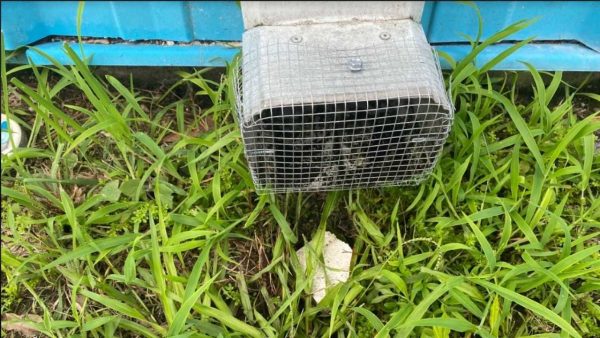Comprehensive Guide to Comprehending Bug Control Approaches and Their Therapy
Comprehending insect control techniques is important for effective management of undesirable microorganisms that posture risks to health and wellness, agriculture, and home. This detailed guide will certainly discover various strategies, including chemical services, organic strategies, and mechanical techniques, all under the umbrella of Integrated Insect Administration (IPM) As we take a look at these methods, it ends up being significantly clear that the selection of approach can considerably affect both human rate of interests and eco-friendly balance. What variables should be taken into consideration when choosing the ideal insect control method for a certain situation? The answer might cause more lasting methods than one may originally presume.
Introduction of Bug Control Approaches
Pest control techniques incorporate a selection of approaches designed to take care of and get rid of undesirable organisms that can harm human wellness, agriculture, and residential or commercial property. Reliable bug administration is crucial for maintaining the integrity of environments and making certain the security of food supplies. These methods can be extensively classified into 3 primary approaches: cultural, mechanical, and organic controls.

Cultural control includes changing farming methods or ecological problems to lower pest facility and reproduction. Mechanical control counts on physical obstacles or gadgets to prevent bug accessibility or straight eliminate them.
Biological control uses natural killers, parasites, or pathogens to control pest populations. This technique highlights ecological balance and can include introducing useful insects, such as ladybugs or predacious nematodes, to handle insect presence.
Integrated pest management (IPM) integrates these techniques, using an all natural technique that emphasizes prevention, monitoring, and responsible monitoring. By utilizing a blend of these methods, parasite control can be a lot more sustainable and reliable, lessening reliance on chemical treatments while safeguarding human wellness and the environment.

Chemical Insect Control Solutions
A selection of chemical bug control solutions are readily available, giving effective alternatives for taking care of parasite populations when various other techniques may drop brief. These options largely include pesticides, herbicides, fungicides, and rodenticides, each designed to target details bugs while lessening injury to non-target microorganisms.
Insecticides are especially efficient against a variety of bugs, consisting of ants, cockroaches, and termites, and can be classified as call or systemic representatives. Contact insecticides kill pests on contact, while systemic pesticides are soaked up by plants, making them harmful to bugs that eat them. Herbicides are made use of to manage unwanted vegetation, whereas fungicides are essential for managing fungal diseases that can harm crops and decorative plants.
In addition, integrated bug management (IPM) principles must be employed, integrating chemical remedies with cultural, mechanical, and biological techniques for here are the findings sustainable pest control. This holistic approach not just boosts pest monitoring effectiveness but also minimizes potential environmental impacts associated with chemical use.
Biological Bug Control Methods
Biological pest control methods use an environmentally friendly option to chemical techniques by making use of all-natural killers, parasites, or pathogens to take care of parasite populaces. This method leverages the environmental relationships between organisms, promoting a well balanced community while minimizing chemical deposit in the atmosphere.
One of one of the most common organic control approaches includes the introduction of all-natural adversaries. As an example, ladybugs are employed to manage aphid populations, while parasitical wasps can target caterpillars and other insects. These all-natural killers successfully minimize pest numbers without harming advantageous insects.
In addition, microbial representatives such as germs, fungi, and viruses are made use of to contaminate and kill particular bugs. Bacillus thuringiensis (Bt), a naturally occurring germs, is widely made use of to regulate caterpillars and various other larvae, showcasing the efficiency of microbial insect control.

Physical and Mechanical Approaches
Often utilized in integrated pest monitoring strategies, physical and mechanical approaches act as effective devices for regulating parasite populations without using chemicals. These methods depend on physical obstacles, catches, and other mechanical tools to avoid or get rid of pests, making them eco pleasant choices.
Physical methods include the use of obstacles such as insect netting, screens, or row covers that physically block insects from accessing plants. This is specifically valuable in farming setups where crop defense is necessary. Additionally, environment adjustment, such as getting rid of debris and standing water, can reduce pest breeding websites, therefore minimizing problems.
Mechanical approaches incorporate traps, which can be made to record particular insects. Sticky traps and scent traps prevail instances that entice and retain bugs, promoting surveillance and control. Vacuuming is an additional mechanical technique, reliable for removing parasites from indoor environments, particularly in cases of problems.
Preventative Bug Management Methods
Effective preventative bug monitoring techniques are crucial for maintaining healthy and balanced environments and minimizing pest-related concerns before they occur (Pest Control in Port Charlotte, FL). These strategies concentrate on positive actions that minimize the probability of pest problems by attending to the origin

Another crucial approach includes proper landscaping methods (Pest Control in Port Charlotte, FL). Maintaining plants cut and away from structures can reduce harborage locations for parasites. Likewise, executing incorporated parasite administration (IPM) techniques that consist of monitoring insect populaces and using organic controls can foster a well balanced community that normally subdues pest numbers.
Education and training for team and residents on recognizing early indications of pest activity are likewise essential elements of an effective preventative program. By fostering an environment of awareness and vigilance, organizations and homeowners can substantially enhance their pest administration efforts and safeguard their areas versus future infestations.
Final Thought
In conclusion, efficient parasite control needs a multifaceted approach that incorporates chemical, biological, and mechanical approaches. Employing an Integrated Parasite Monitoring (IPM) structure enables the lasting monitoring of bugs while minimizing eco-friendly influence. Preventative approaches better improve the efficiency of these approaches, making certain long-lasting security of health, farming, and residential or commercial property. Inevitably, a complete understanding of these diverse bug control methods is vital for achieving effective outcomes in insect management efforts.